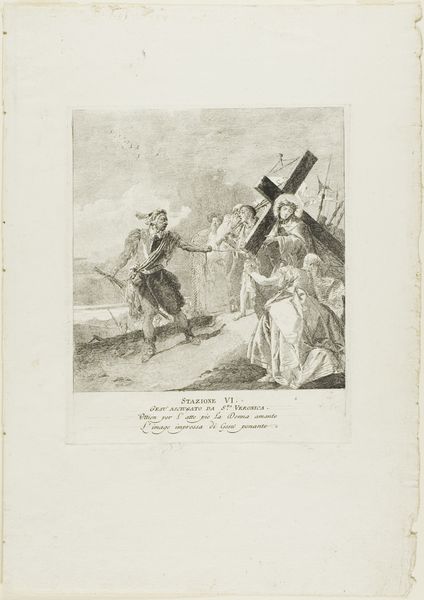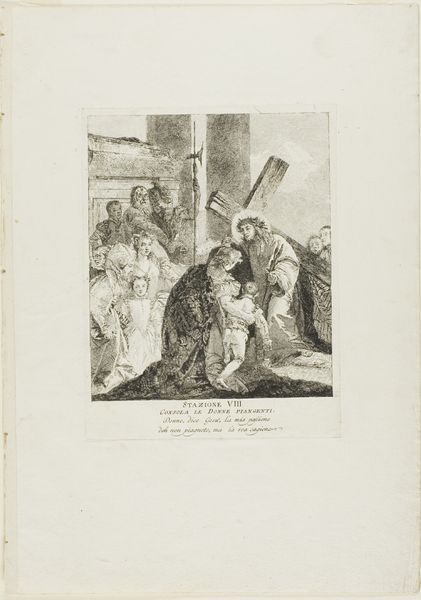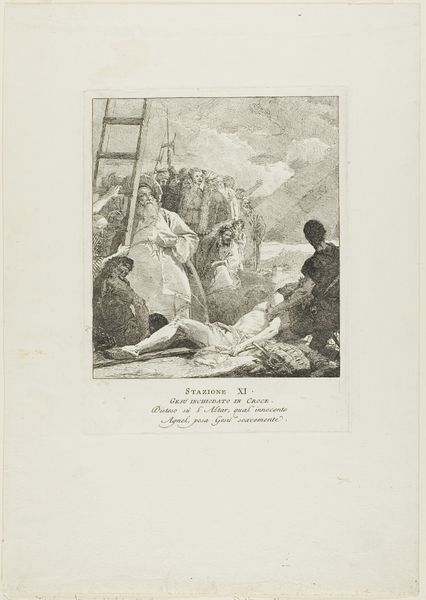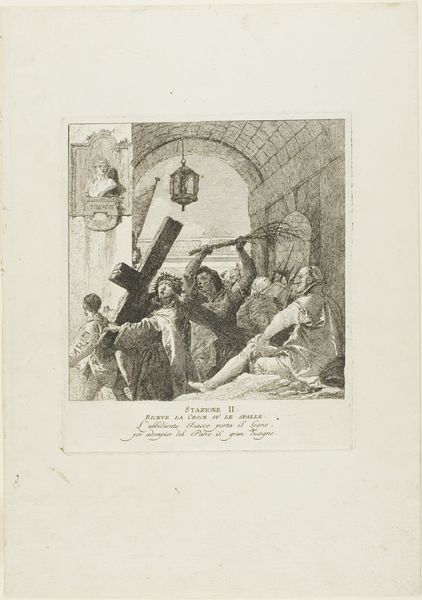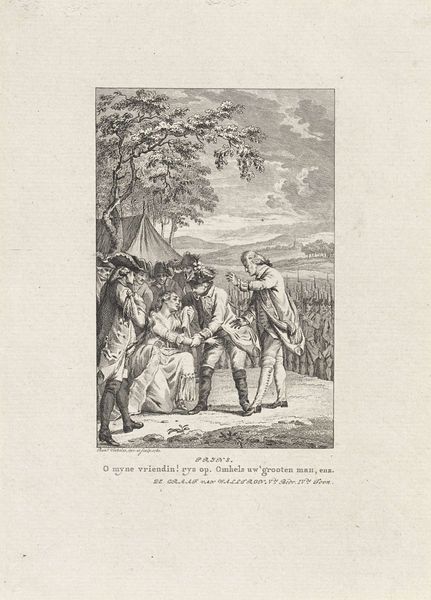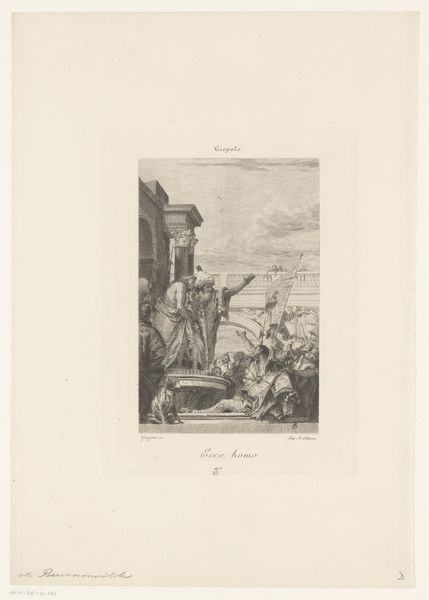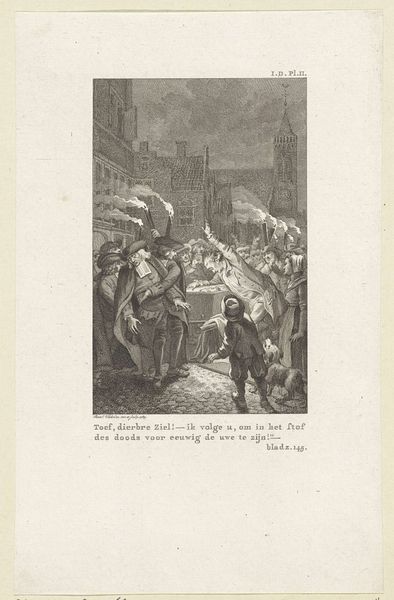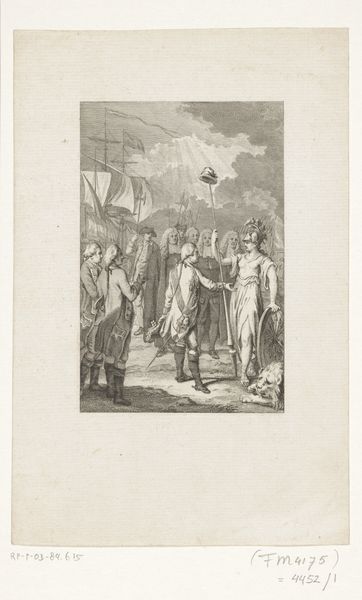
Christ Falls Beneath the Cross for the Third Time, plate nine from Stations of the Cross c. 1748 - 1749
0:00
0:00
drawing, print, etching, paper
#
drawing
#
baroque
# print
#
etching
#
paper
#
history-painting
Dimensions: 222 × 173 mm
Copyright: Public Domain
Curator: Here we have "Christ Falls Beneath the Cross for the Third Time," plate nine from Giovanni Domenico Tiepolo's "Stations of the Cross," created around 1748 or 1749. It’s an etching printed on paper, now held at the Art Institute of Chicago. Editor: The first thing that strikes me is how chaotic the scene feels. It’s incredibly detailed, with a whirlwind of figures and textures rendered in stark black and white. Curator: Yes, the series depicts the events leading up to the crucifixion, a commission deeply embedded in the Catholic Church’s efforts to reinforce religious devotion during the Baroque period. Tiepolo used printmaking—etching, specifically—to circulate these images widely, making religious narratives accessible to a broader public. Editor: I notice the strong diagonal of the cross cutting across the composition. The etched lines seem deliberately raw, almost frantic, enhancing the feeling of suffering and struggle. Did the choice of etching have a deeper significance for its making? Curator: Absolutely. Etching allowed for mass production, meaning these images could be distributed throughout Venice and beyond. But, furthermore, they are intended as acts of contrition that viewers across class lines are invited to meditate on through repeated viewing in churches or through the home. Editor: I see how the prints blur the line between high art and devotional object, functioning in both the elite world of artistic production and the more everyday sphere of religious practice. The use of paper, itself a relatively inexpensive material at the time, further supports this. Curator: Precisely. It is a social document as much as an art piece; an articulation of power relations within 18th century Venice between the religious order, the artist and the wider population. The themes that the artwork depicts have certainly lost none of their significance to contemporary power structures. Editor: Looking closely at the process, the lines, the weight and the detail afforded to the composition, and reflecting on its subsequent distribution—I'm struck by the hands involved at every level of this work. Curator: And by examining how it moved through society, from Tiepolo’s studio to the hands of countless viewers, we start to grasp the complex cultural work it performed and continues to perform. Editor: It gives us an intriguing insight into the intersection of art, industry and ideology of its era.
Comments
No comments
Be the first to comment and join the conversation on the ultimate creative platform.
